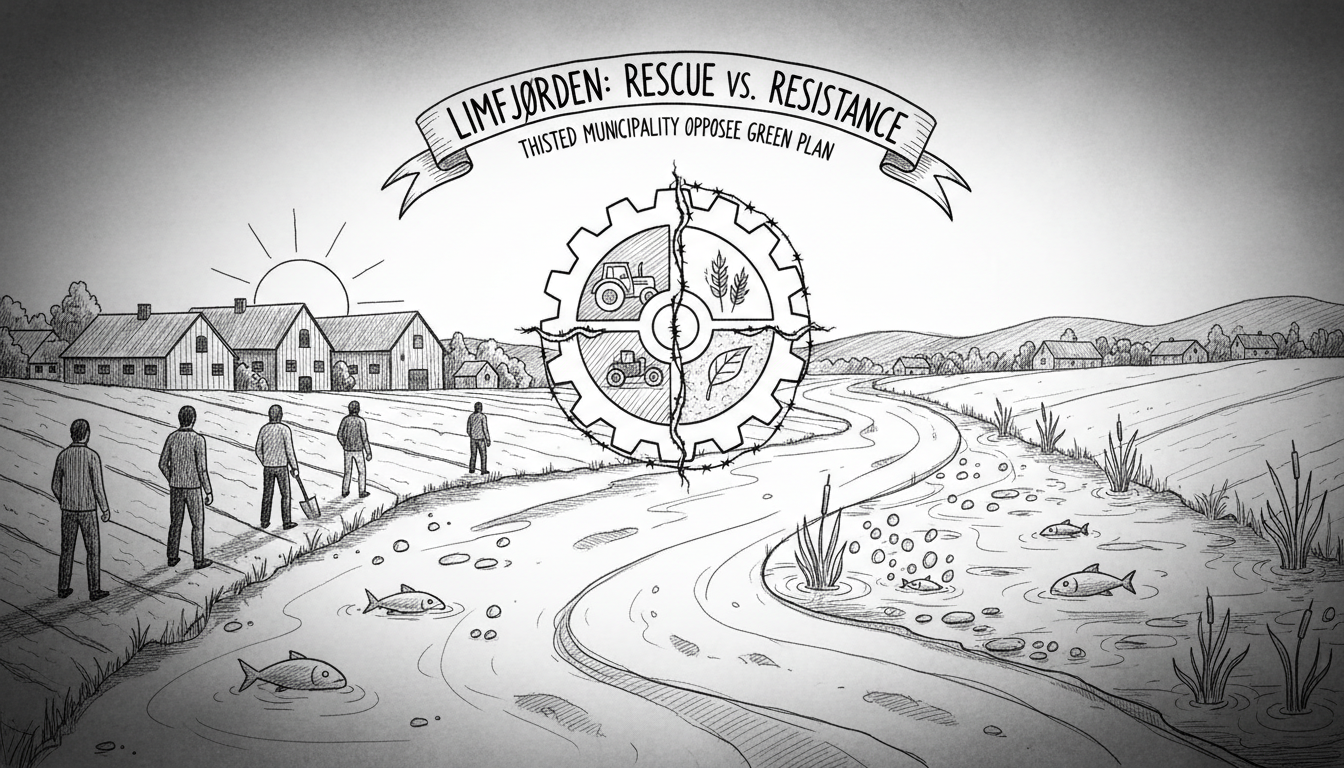Thisted Municipality is pushing back against agricultural land requirements in Denmark's green tripartite agreement. Local officials recently invited residents to see environmental restoration firsthand. They organized a community walk in rubber boots along a gravel road in Midtthy. Residents saw the transformed Nørkær Å stream winding through the landscape.
The stream now flows naturally after workers removed drainage systems and ditches. Some fields will no longer see agricultural use. This project represents one piece of a larger effort to revive the Limfjorden's damaged ecosystem.
The Limfjorden suffered severe oxygen depletion this summer. Multiple areas of the Thisted Bredning seabed show no signs of life. High school students documented the damage using underwater cameras in September. They found neither fish nor eelgrass in these dead zones.
Thisted Municipality has several similar restoration projects underway. These initiatives aim to reduce nitrogen runoff into the fjord. Officials want less fertilizer use on elevated agricultural land. But politicians disagree sharply about implementation methods.
The green tripartite agreement involves government, agricultural, and environmental stakeholders. It sets binding targets for reducing nitrogen pollution. Municipalities must designate specific agricultural land for conversion or restrictions. Thisted's resistance highlights the tension between environmental goals and farming interests.
Denmark has struggled with water quality in its coastal areas for decades. The Limfjorden connects the North Sea with the Kattegat sea. Its complex waterways span multiple municipalities and regions. Pollution from agricultural runoff represents a persistent challenge.
Local farmers worry about economic impacts from land use changes. Environmental groups argue the measures don't go far enough. The political debate reflects broader tensions in Danish environmental policy. Municipal autonomy sometimes conflicts with national environmental targets.
What happens in Thisted could influence similar discussions across Denmark. Other municipalities facing similar requirements are watching closely. The outcome may set precedents for balancing agricultural needs with environmental protection.
The Nørkær Å project demonstrates what's possible when communities engage directly with restoration work. But real progress requires broader cooperation across sectors and jurisdictions. The Limfjorden's recovery depends on consistent effort from all stakeholders.
Danish environmental restoration projects often face this implementation gap between policy and practice. Local resistance to the Limfjorden rescue plan shows how complex environmental governance becomes at ground level. The real test will be whether compromise can bridge the divide between ecological necessity and economic reality.

